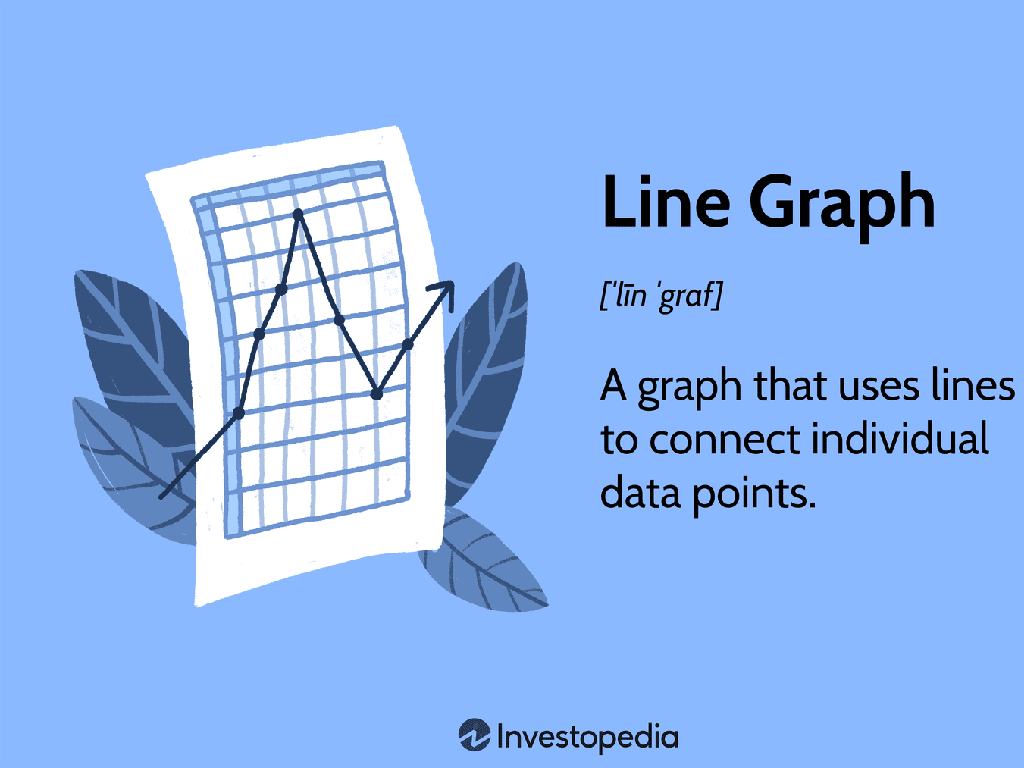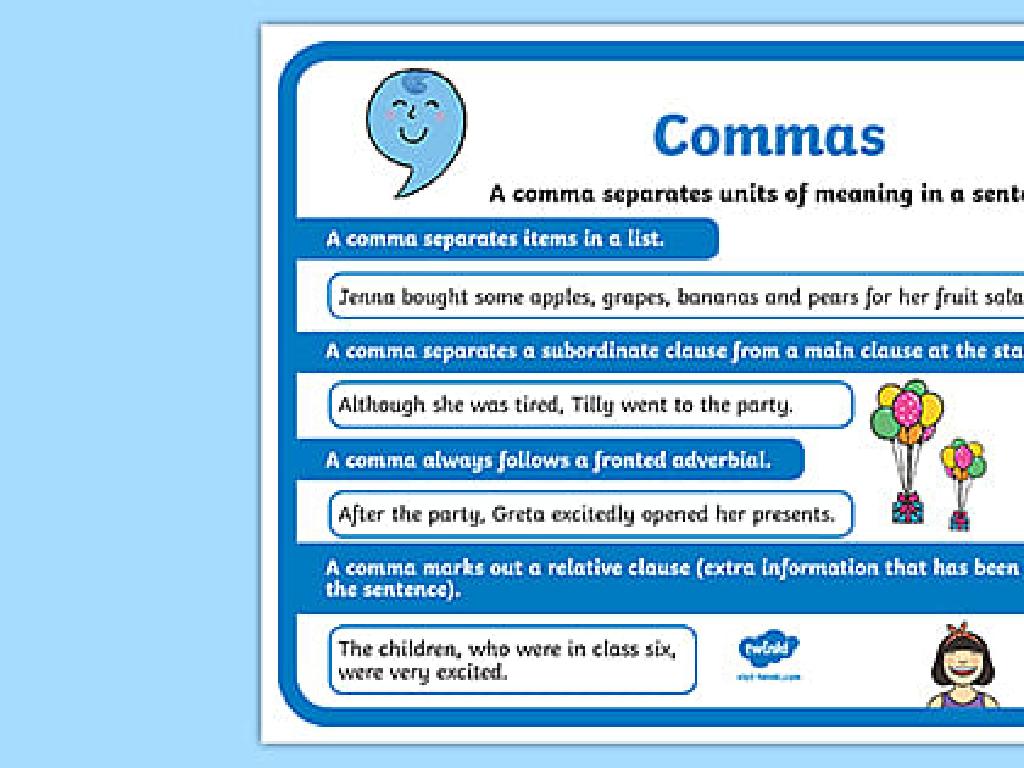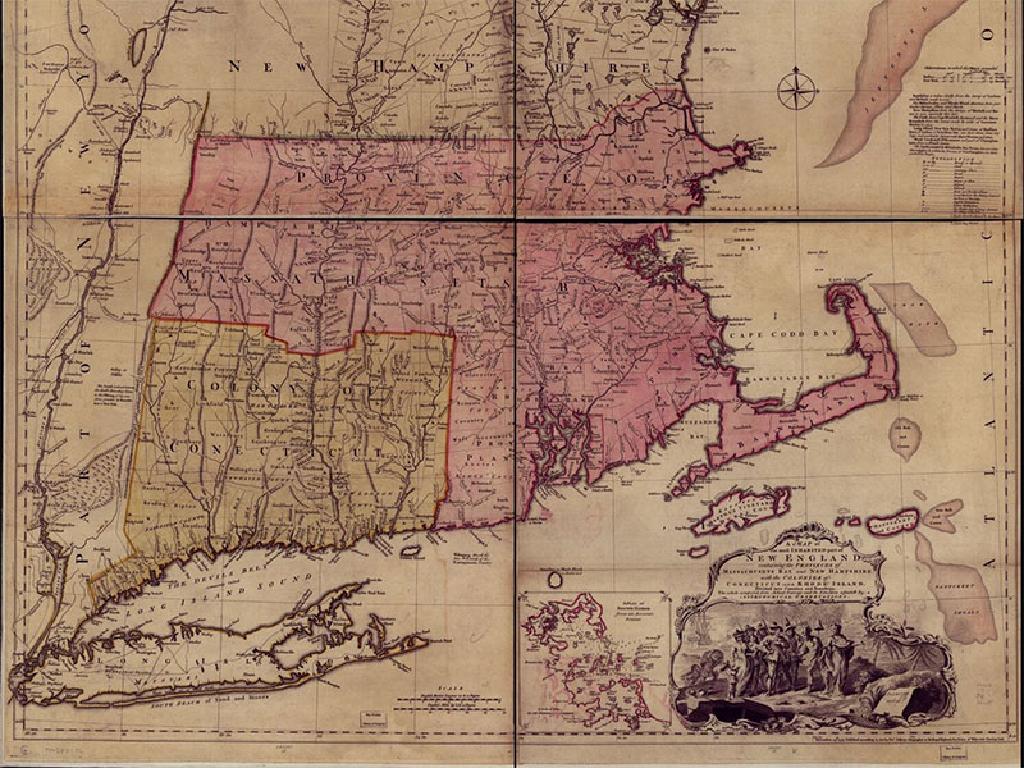Compare Lengths: Metric Units
Subject: Math
Grade: Second grade
Topic: Metric Units Of Length
Summary: This engaging second grade math presentation teaches students how to compare lengths using metric units like meters and centimeters. Through practical activities, students measure and compare classroom objects with rulers, understanding when to use meters for greater lengths and centimeters for smaller ones. Real-life examples and group games help them grasp the difference between longer and shorter items, building essential measurement and comparison skills for everyday situations.
Please LOG IN to download the presentation. Access is available to registered users only.
View More Content
Exploring Metric Units of Length
– Learning to measure lengths
– Understanding long vs. short
– Comparing items: Which is longer or shorter?
– Using meters and centimeters
– Meters (m) for big lengths, centimeters (cm) for small
– Practice with real objects
– Measure items in the classroom with rulers
|
This slide introduces second-grade students to the concept of measuring lengths using metric units. Start by explaining that length tells us how long or short an object is. Introduce meters and centimeters as units of measurement, with meters being used for larger lengths and centimeters for smaller lengths. Use classroom objects to demonstrate how to measure length using a ruler or a meter stick. Encourage students to understand the difference between longer and shorter items by comparing them directly. As an activity, students can measure various items in the classroom and record their lengths in meters or centimeters. This practical application helps solidify their understanding of metric units of length.
Exploring Metric Units of Length
– Understanding metric units
– Metric units measure length, weight, volume
– Focusing on meters and centimeters
– Meters (m) measure big lengths, centimeters (cm) smaller ones
– 100 centimeters in a meter
– Like 100 pennies in a dollar
– Comparing lengths using m and cm
– Which is longer, 1m or 150cm? Let’s find out!
|
This slide introduces the concept of metric units, specifically focusing on units of length such as meters and centimeters, which are fundamental in the metric system. Explain that the metric system is like a language for measuring things. Just as there are 100 pennies in one dollar, there are 100 centimeters in one meter. Use relatable examples to help students grasp the concept of length comparison, such as comparing their heights or the length of objects in the classroom. Encourage students to think about when they might use meters versus centimeters in real life and prepare simple activities where they can practice measuring items using both units.
Comparing Lengths with Metric Units
– Comparing object lengths
– Which is longer, a pencil or a shoe?
– Measuring with a ruler in cm
– Rulers help us measure in centimeters, perfect for small objects.
– Using a meter stick for more
– For bigger things, like a desk, we use a meter stick.
– Practice by measuring items
|
This slide introduces students to the concept of comparing lengths using metric units. Start by explaining that we can observe objects and guess which one is longer or shorter, but to know for sure, we need to measure. Show how to use a ruler to measure smaller items in centimeters, and then demonstrate the use of a meter stick for larger objects. Encourage students to practice measuring items around the classroom or at home to reinforce the concept. Provide a variety of objects for them to measure and compare, ensuring they understand the difference between centimeters and meters.
Let’s Measure Together!
– Measure classroom items
– Record lengths in centimeters
– Use a ruler to find the length in cm
– Discuss our measurements
– Why is one item longer or shorter?
– Share with the class
|
This slide introduces a hands-on class activity focused on measuring objects found in the classroom using metric units (centimeters). Students will use rulers to measure various items, such as pencils, books, or furniture, and then write down their measurements. Encourage them to think about why certain items are longer or shorter than others, promoting critical thinking about size and measurement. After recording their findings, students will have the opportunity to discuss their results and share with the class, fostering a collaborative learning environment. Prepare a list of diverse objects to measure, ensure that each student has access to a ruler, and guide them on how to correctly use it. This activity will help solidify their understanding of metric units of length and the practical application of measurement skills.
Longer or Shorter: Comparing Lengths
– Guess which object is longer
– Measure objects with a ruler
– Use the centimeter side of your ruler
– Learn longer means more centimeters
– Objects with more centimeters are longer
– Confirm if our guess was right
|
This slide introduces the concept of comparing lengths using metric units. Start by showing two objects and ask the students to guess which one is longer. Then, demonstrate how to measure each object using a ruler, making sure to use the centimeter side. Explain that the object with the higher number of centimeters is the longer one. After measuring, discuss with the class whether their initial guesses were correct. This activity helps students understand the practical use of centimeters in measuring and comparing lengths. Encourage students to measure items around the classroom for additional practice.
Real-Life Examples: Comparing Lengths
– Everyday items and their lengths
– Measure common objects
– How long is a pencil, book, or door?
– Understanding length usefulness
– Knowing lengths helps in planning and organizing spaces
– Practice with real items
– Use rulers to measure items in the classroom
|
This slide aims to help students relate the concept of measuring lengths to everyday objects. Start by discussing familiar items such as pencils, books, and doors, and ask the students to guess their lengths. Explain how knowing the length of things is useful in real life, for example, when buying a bookshelf to fit books or determining if a new rug will fit in a room. Encourage students to measure these items using metric units with rulers or tape measures. This practical activity will reinforce their understanding of metric measurements and the importance of accuracy in everyday situations.
Class Activity: Length Scavenger Hunt
– Find classroom items to measure
– Measure with a partner
– Record lengths in centimeters
– Use a ruler to find the length in cm
– Compare the measurements
– Discuss which item is longer or shorter
|
This interactive activity is designed to help students understand metric units of length through hands-on experience. Students will work in pairs to foster teamwork and communication skills. Provide rulers or measuring tapes to each pair and ensure they are familiar with centimeters on the tool. Encourage them to find a variety of items to measure, such as pencils, books, or furniture. After recording the lengths, guide them to compare and discuss their findings, reinforcing the concept of longer and shorter. Possible variations for different pairs could include measuring window widths, the length of the chalkboard, or the distance between desks.
Measuring Success with Metric Units
– Celebrating our measuring skills
– Metric units in daily life
– Understanding cm and m helps with many tasks
– Practice measuring at home
– Use a ruler to measure toys, furniture, etc.
– Keep exploring with family
|
Well done to all the students for learning how to measure and compare lengths using metric units! Understanding centimeters and meters is not just for math class; it’s a skill that will help in many everyday situations, like cooking or building. Encourage the students to continue practicing at home by measuring different items and comparing their lengths with the help of their family members. This will reinforce their learning and help them see the practical use of what they’ve learned. Remember to praise their efforts and curiosity, and suggest that they measure objects of interest to make the activity more engaging.





